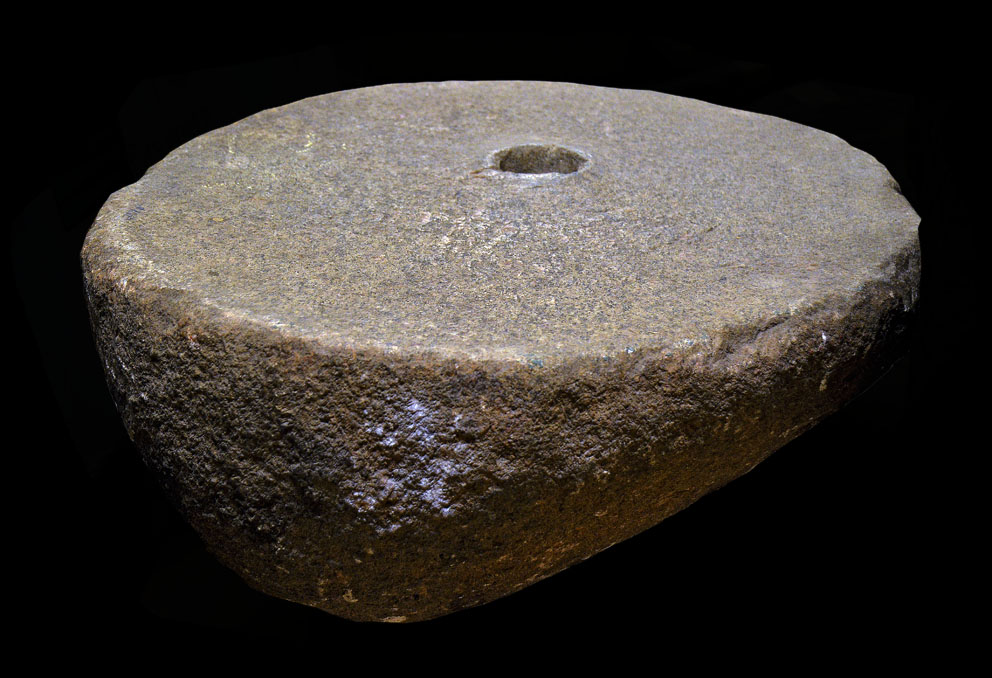
 David Heslop continued collecting quern data throughout the 1990’s. By 1991, when he died, this Yorkshire Quern Survey (“YQS”) archive included data on almost 1,000 querns Throughout the 1980’s, Don Spratt built up a team of c.20 YAS members of the Prehistory Research Section, who reported on local quern collections throughout Yorkshire. In 1980, Raymond Hayes, John Hemingway & Don Spratt collected data on 120 beehive querns from NE Yorks, demonstrating widespread adoption of a mixed farming regime in the area around the North York Moors during later prehistory and the Roman period. Between 1955-66, Sidney Jackson and his volunteers at the Cartwright Hall Museum, Bradford recorded over 300 querns. Mortimer Wheeler, in 1954, cited the 13 beehive querns he knew from Yorkshire, as evidence of a ‘crude, pastoral, semi-nomadic economy’. We work with commercial archaeological units to provide either a) summary assessments, or b) more detailed quern reports for publication. We respond to queries from individual or from local groups about querns that they have found. This resource provides the basis for publications researching developments in quern usage, with a focus on the north of England. Our paper archive covers over 7,000 hand-querns and over 500 millstones, making it one of the largest data banks in the country. We study prehistoric, Roman and early medieval equipment used for grinding flour and other materials. All of these require further consideration.
David Heslop continued collecting quern data throughout the 1990’s. By 1991, when he died, this Yorkshire Quern Survey (“YQS”) archive included data on almost 1,000 querns Throughout the 1980’s, Don Spratt built up a team of c.20 YAS members of the Prehistory Research Section, who reported on local quern collections throughout Yorkshire. In 1980, Raymond Hayes, John Hemingway & Don Spratt collected data on 120 beehive querns from NE Yorks, demonstrating widespread adoption of a mixed farming regime in the area around the North York Moors during later prehistory and the Roman period. Between 1955-66, Sidney Jackson and his volunteers at the Cartwright Hall Museum, Bradford recorded over 300 querns. Mortimer Wheeler, in 1954, cited the 13 beehive querns he knew from Yorkshire, as evidence of a ‘crude, pastoral, semi-nomadic economy’. We work with commercial archaeological units to provide either a) summary assessments, or b) more detailed quern reports for publication. We respond to queries from individual or from local groups about querns that they have found. This resource provides the basis for publications researching developments in quern usage, with a focus on the north of England. Our paper archive covers over 7,000 hand-querns and over 500 millstones, making it one of the largest data banks in the country. We study prehistoric, Roman and early medieval equipment used for grinding flour and other materials. All of these require further consideration. 
Or maybe the floor was completely removed during the construction of the buttresses.

Various other suggestions were put forward – perhaps the orthostatic recesses along the western wall meant that no flooring was laid in that area (in Structure Twelve the yellow clay floor stopped at the thresholds of the internal recesses). Why? Was the clay floor removed before the construction of the phase two buttresses or was it never there in the first place? These are the questions we’re looking to answer.Ī sondage – a small, but deep, exploratory trench – was discussed to see whether deposits under the yellow clay floor relate to Structure Ten or to another structure beneath. Yellow clay was the Neolithic flooring material of choice at the Ness but in parts of Structure Ten, the area under the south-western buttress for example, it appears that no floor was laid. We’ll begin today’s diary in Structure Ten, where dig director Nick and supervisors Jo and Sinead got together to formulate a strategy for tackling the enigma of missing floors in sections of the building. Nick, Jo and Sinead ponder the mystery of Structure Ten’s missing floor.







 0 kommentar(er)
0 kommentar(er)
